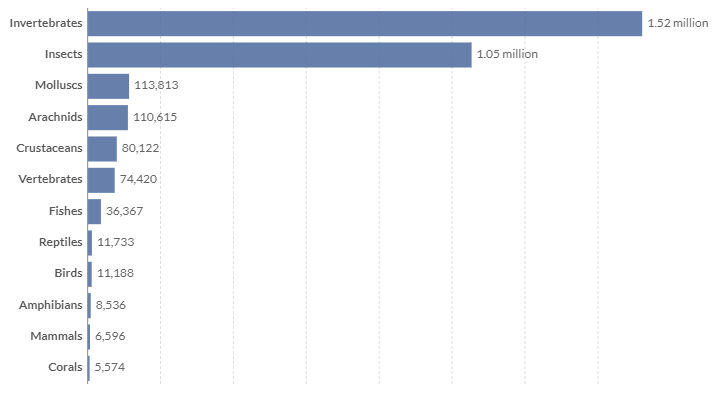|
|
Fauna - Taxonomic and Life CyclesModern forms of taxonomy have been present in literature for approximately 250 years, with origins of the currently used binomial nomenclature going back to the 18th century[4]. Invertebrates comprise 31 out of the 32 animal phyla, representing almost 75% of all known species on earth[1]. Organising fauna by species classification may assist with communication of where individuals and populations might occur. It may also help inform management processes that target species sharing common characteristics or closely-related ancestry and life history traits. Quick facts
TaxonomyTaxonomy is the field of study that involves both the methods for classification and the description of species. There have been major shifts in taxonomy in recent years due to genomic sequencing technologies and access to refined sampling and monitoring techniques and equipment[2]. It is an important tool for determining fauna biodiversity, as species classification is a primary factor in measuring species richness. It also allows stakeholders or stakeholder groups to discuss specific fauna that share the same characteristics within, or across, environmental systems. Life cyclesAnimal life cycles provide a holistic perspective on the interconnectedness of all life stages of a specific organism or a species as a whole. Some fish species examples are provided on the pages below for the Golden Perch, Hyrtl's catfish, Rainbowfish, eel-tailed catfish and Murray River cod. WetlandSummary – species listsThe WetlandSummary tool provides a variety of fauna species lists based on a specific area type. For example, native animal species found in the Brisbane River drainage sub-basin. More information on these lists is available at the bottom of every species list page in WetlandSummary. WildNetA select number of wetland-related fauna species are described in the pages below, however, for a comprehensive list of all species recognised across Queensland Government please refer to the WildNet database. Information in this database approved for publication is accessible via:
Pages under this sectionReferences
Last updated: 13 October 2023 This page should be cited as: Department of Environment, Science and Innovation, Queensland (2023) Fauna - Taxonomic and Life Cycles, WetlandInfo website, accessed 25 June 2024. Available at: https://wetlandinfo.des.qld.gov.au/wetlands/ecology/components/biota/fauna/fauna-taxon/ |

 — Department of Environment, Science and Innovation
— Department of Environment, Science and Innovation


